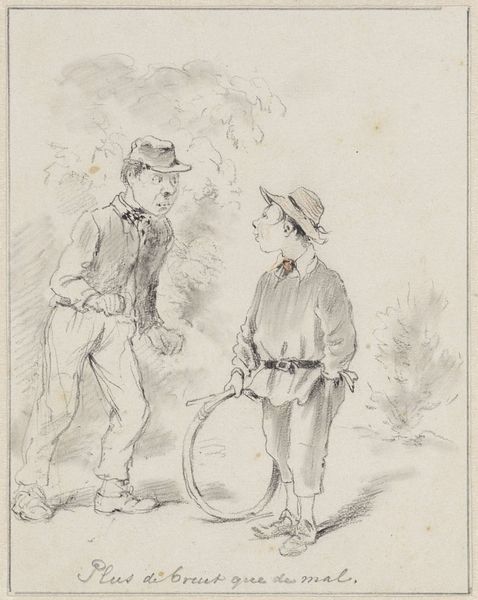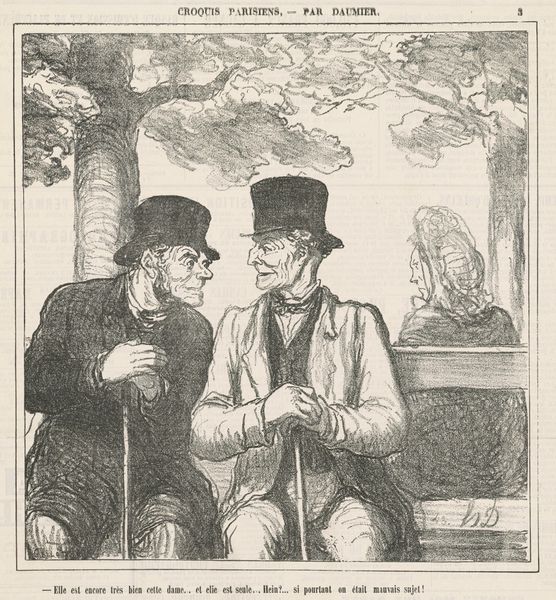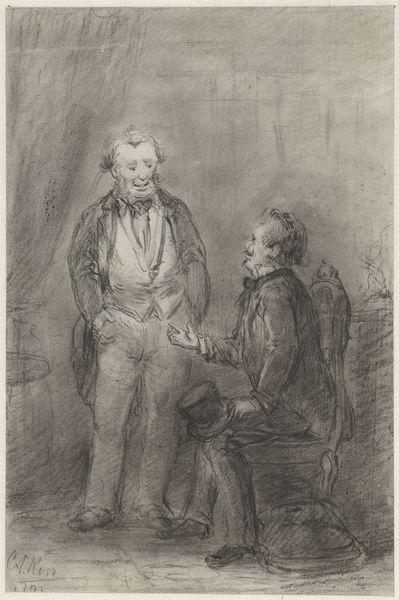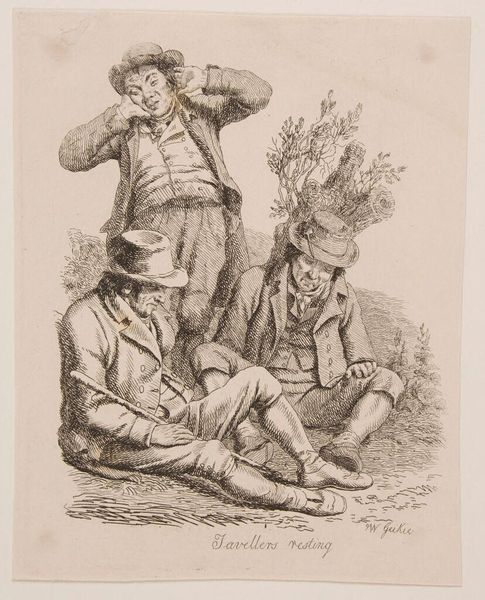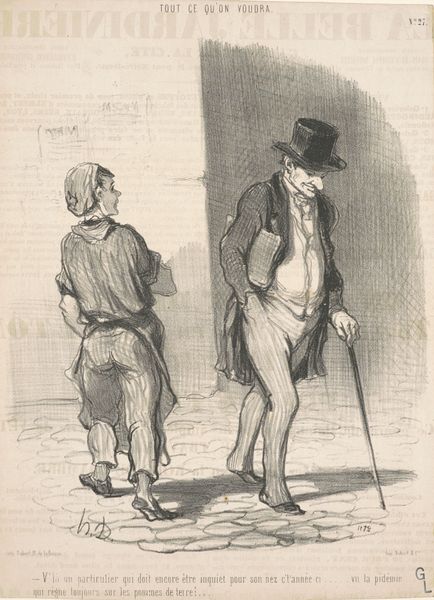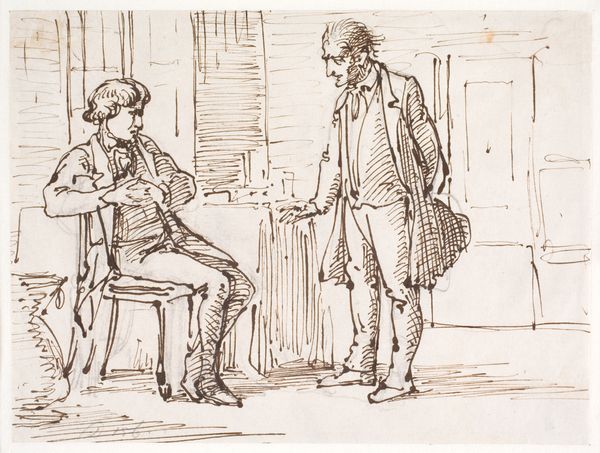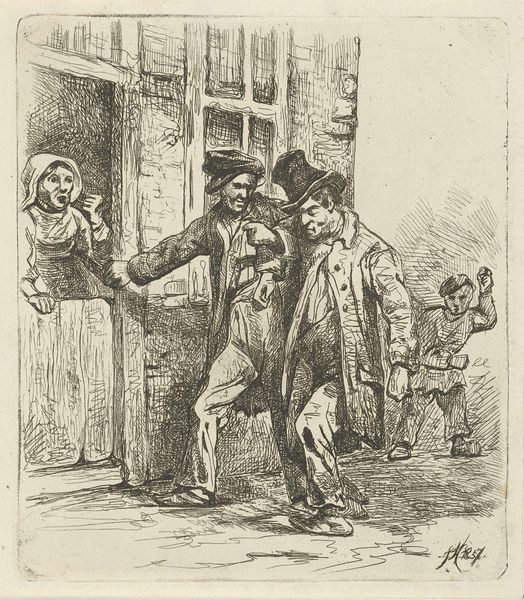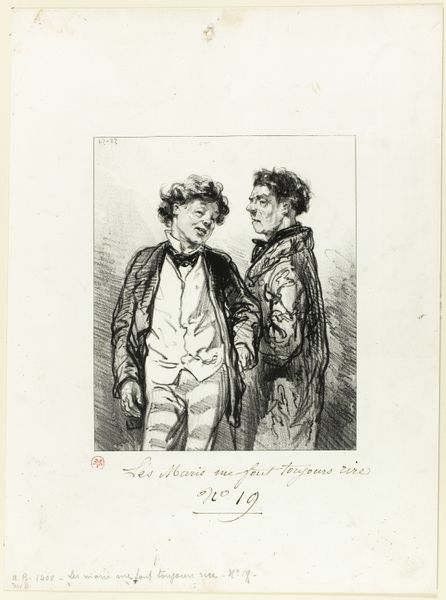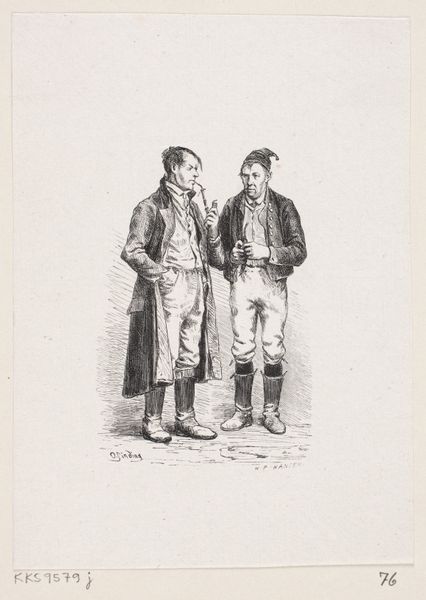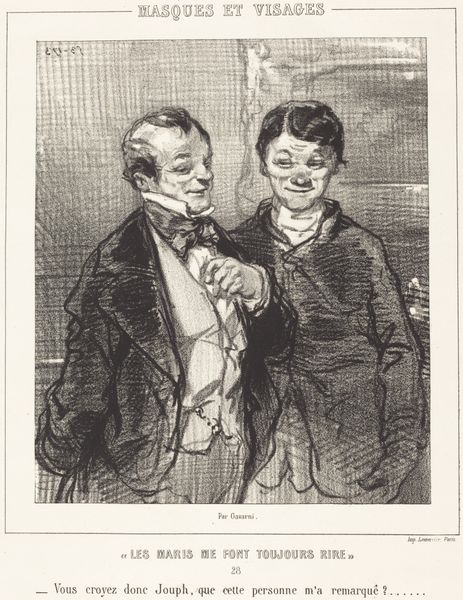
drawing, print, graphite
#
portrait
#
drawing
# print
#
graphite
#
genre-painting
Copyright: National Gallery of Art: CC0 1.0
Curator: Welcome. Today we’re considering a print titled "Histoire d'en dire deux" attributed to Paul Gavarni. The work utilizes graphite in what appears to be a genre scene with two male figures. Editor: Well, my first thought is… tension. I can practically feel the air crackling between these two. The guy on the right looks like he's about to spill some serious beans to the other one, whose body language reads like a closed book. Curator: Precisely! Consider the structural dynamics at play. The leaning posture of the figure on the right contrasts starkly with the rigid upright stance of his counterpart. This, in itself, is a compelling visual articulation. Editor: You make it sound so academic. To me, it looks like he’s sharing a scandalous piece of gossip! Maybe I am projecting my wild inner world onto the narrative, but he's totally dropping a truth bomb, and the other guy is dreading it! Look how he is pointing away from himself almost defensively. Curator: A possible interpretation, but let's also examine the treatment of light and shadow. Note the detailed shading on the informer’s face, drawing the viewer's eye toward the unfolding narrative, whilst we know nothing of what’s being confessed or revealed. It leaves it up to interpretation. Editor: Maybe you're right. He might also just be explaining the route to the market in a rather intense way! Still, Gavarni gets to something universally understood about people: those little moments of intense conversation are visually stimulating when you have only pose, body language and gesture. Curator: An astute observation. In isolating these figures and the dramatic composition in what appears to be an unremarkable setting, Gavarni directs our attention to this simple human interaction. The details don't really matter, the relationship is what's paramount. Editor: Yeah. On second thought it almost has something existential. Like Beckett but in pencil form. It is almost as though, regardless of their talk it amounts to nothing—an emptiness or futility is inherent in the scene. We all have a role in life's drama. We just play it. Curator: Exactly. The narrative, as you implied, is intentionally obscured and allows us a window into the broader landscape of the human experience. Editor: Always a good idea in art, isn’t it? Never show all your cards. Leaves space for the imagination to dance around!
Comments
No comments
Be the first to comment and join the conversation on the ultimate creative platform.

